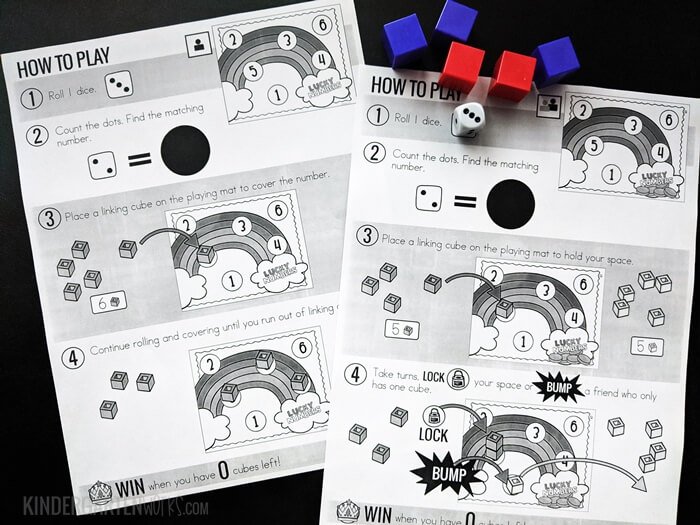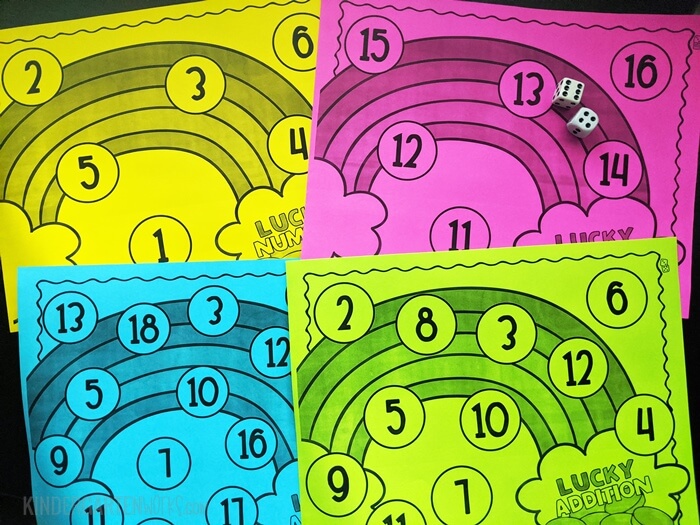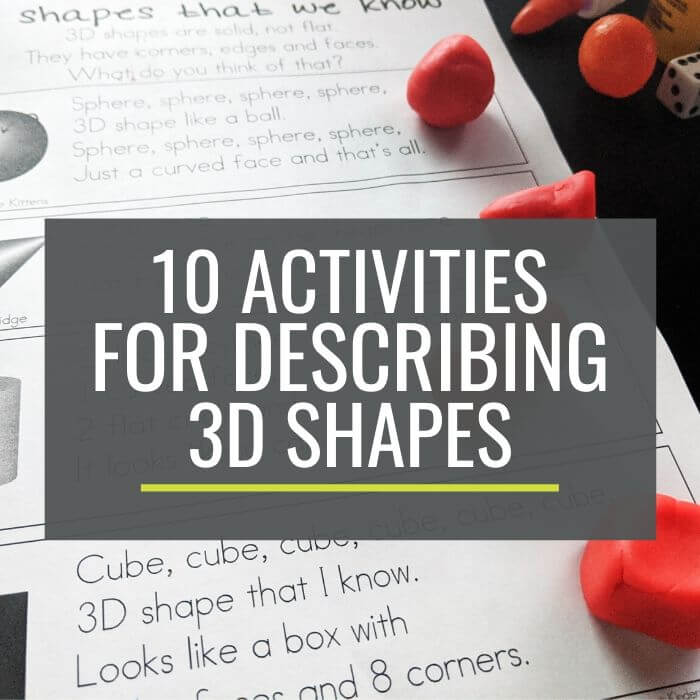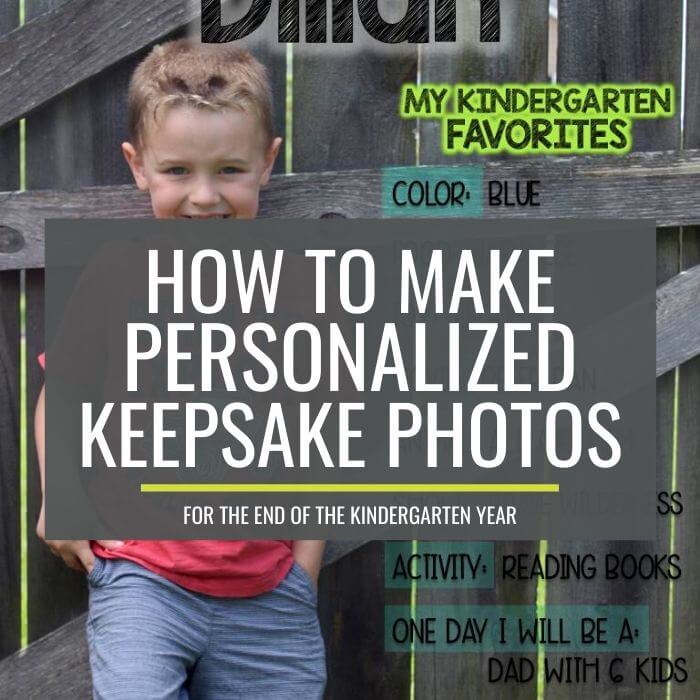Free Lucky Rainbow Addition Bump Game
Work on addition skills with a free set of rainbow-themed bump-style gameboards. Teach your students to play bump once and use it all year for varying levels of difficulty.

In kindergarten, students should have strong counting skills and be working to develop a strong understanding of addition.
I find that using games during our guided math time is an excellent way to get in the amount of practice students need to work on skills without feeling like a drill sergeant.
So here are four rainbow-themed gameboards that your students can play to practice counting skills and work towards developing that strong understanding of addition. You can save these for St. Patrick’s Day but I say use them anytime your class is ready.
Let me show you how to play, explain the different levels of gameplay that comes in this set, and give you the directions so you can make it yourself.
How to play
In this set of bump gameboards that you can download below, there are four different skill levels.
The rules for each of the games is almost identical, though.
To play this game in your classroom you’ll need ten linking cubes (or other counters) each in two colors and two dice.
The end goal is to have all of your linking cubes placed on the gameboard first.
Students can play in partners or by themselves.

Instruction sheets that are picture-based to support non-readers are included for both styles of play and all levels.
Single-player
If playing by themselves, the student rolls the dice and either counts or adds.
Then they find the matching number circle on the game board and cover it up with their color linking cube.
They continue to roll, subtract and cover until all of the linking cubes have been placed onto the board. Then they win the game.
Two players
If playing in partners, students will take turns.
On their turn, the student rolls the dice either counts or adds.
Then they find the matching number circle on the gameboard and cover it up with their color linking cube.
Now – here’s where it gets fun. This is a bump-style game.
- If a circle with that number is open on the gameboard, simply put your linking cube on.
- If a circle with that number is covered by someone else’s linking cube, you bump it off. Their linking cube must go back to them and your piece now covers the space.
- If a circle with that number is covered by your own linking cube, you snap a second linking cube on top and lock the space. The other player cannot bump off the linking cubes. No more cubes can be added on top.
They continue to take turns rolling, adding, and covering (or bumping and locking) until all of their linking cubes have been placed onto the board.
Whoever gets all of their pieces onto the board first, wins the game!
Different levels included
Now, this is where the fun as the teacher comes in. You teach this game once and they learn the basic rules for bump-style games.
Then you simply swap out the gameboard for a higher-level skill (or a different theme) and they still understand how to play… you don’t have to reteach that. You simply explain the new skill involved to put pieces on the gameboard and off they go!
The first game in this free download is called lucky numbers. It’s for counting one-to-one to six and recognizing numerals 1-6.

Students only need one die for this game. I wouldn’t say this is truly an “addition” game but it teaches the basics of how to play the game and works on some basic skills.
This starter gameboard feels very similar to my beginning numbers roll and color dice game.
The next gameboard requires two dice. Kindergarten students will be counting one-to-one (or adding) to 12 and recognizing numerals to 12.

This game is great to teach the “counting on” strategy. So teach them to say the larger number out of the two rolled and keep on counting as they touch the dots on the second dice.
The third type of gameplay is for when you want to work on developing some automaticity with composing teen numbers.

You’ll need to create a special ten frame die for this game, but I’ve got your back on that one. I’ve got a template that is perfect to fit the standard-sized dice you’ve already got in your classroom. Simply convert one into a ten-frame die for this game.
Students roll the two dice, add and find the matching numeral 11-16. You’ll want to encourage the “counting on” strategy again here.
The last gameboard is for kindergartners who need a challenge. Now when you take a look at this gameboard you may be thinking, what’s so challenging about counting one-to-one using three dice?

But at this level, students shouldn’t just be counting every dot on the dice in order to add. This level of gameplay is designed for students to put groupings together to add.
For example, if they roll the dice… can they see that 3+1+6 also is 4+6? Can they subitize groupings? Can they use that to add more efficiently?
Students roll 3 dice, add and find the matching number 3-18 on the gameboard for this last level of play.
If you want to provide additional support for this level of play, draw two ten frames onto the gameboard (before laminating) so students can draw in the number of dots with a dry-erase marker and use their composing numbers skills to see the teen number sum more easily.
How to make it
Now that you know how to play and have checked out all of the levels included, it’s time to make this game for your classroom.
First, download your free lucky rainbow addition bump. [terms of use] [downloading help]

Then print the gameboard(s) on colored paper or in color. You can print the directions sheets on the back of the game or print them separately. There are instructions included for both single and two-player gameplay.
Laminate the game board mat or slip it into a plastic sleeve protector for longevity.
Add the correct number of dice and 10 linking cubes in two colors and you’re all set.
Each game will store beautifully in a gallon-sized Ziploc baggie.
Read more: How to organize math materials when you’re not using them
Let’s wrap it up
There you have it – a free rainbow-themed printable bump game set to improve students’ addition fluency skills. I hope that your class finds these games fun and that you like what they’re learning.
You may also want to check out this dinnertime subtraction bump game that is free too.

If you like what I do here on KindergartenWorks, then be sure to subscribe today. I look forward to sharing ideas with you weekly.






